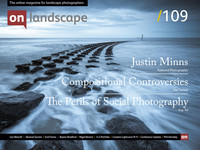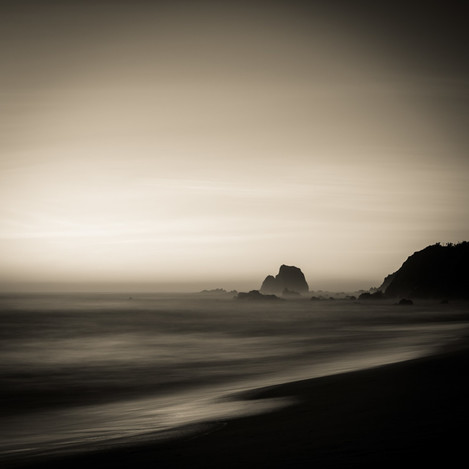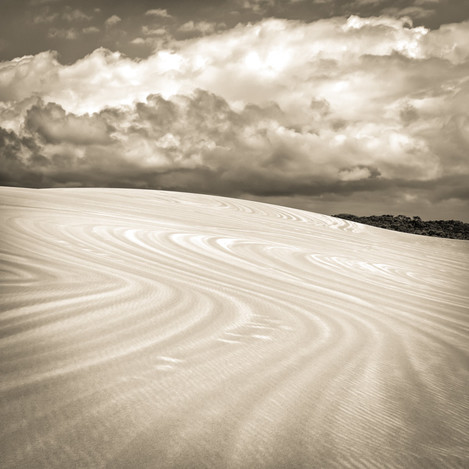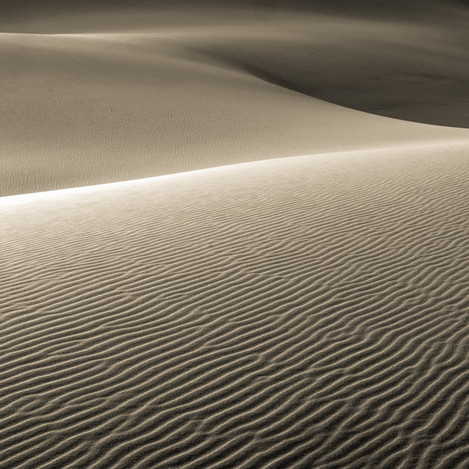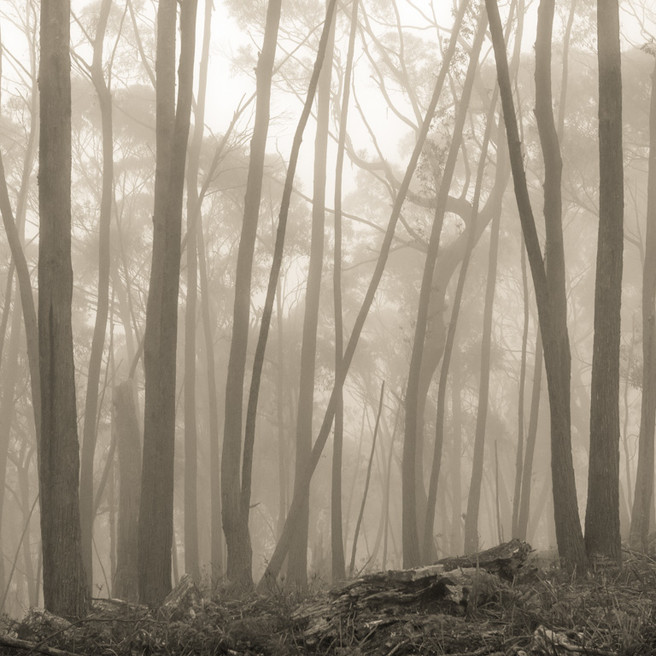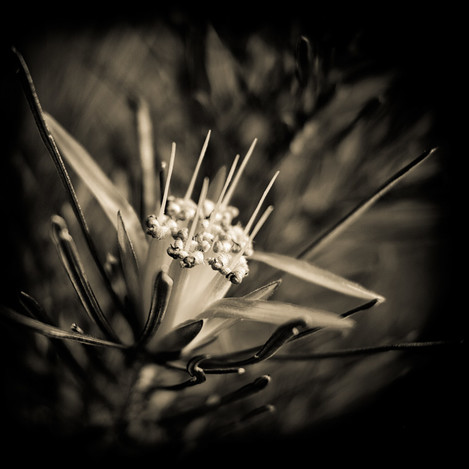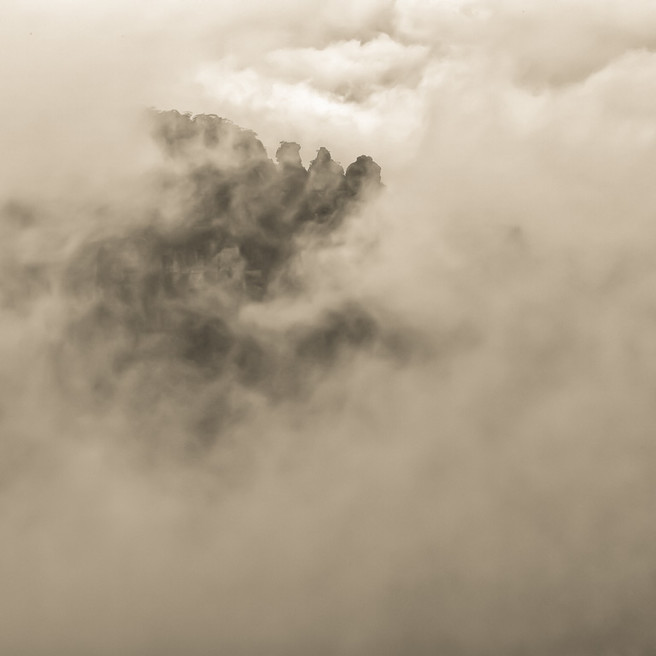What can a visual artist learn from musicians when a creative block is encountered?

Len Metcalf
Len is a photography educator and art teacher. He is the director of Len's School located in Sydney, Australia, which offers a wide range of online courses from year-long photography masterclasses to shorter composition and drawing courses. Len’s School offers innovative small group workshops and tours for dedicated amateur photographers who wish to grow.
Len publishes Len’s Journal which celebrates creative photography quarterly and is only available via subscription.
Len exhibits his photography regularly and is widely published. His intimate portraits of people and nature show a unique and very personal vision of the beauty of the world though his photographic art.
I attended a workshop held at Woodford Folk Festival (December 2002) where a panel of musicians revealed their methods for unleashing their creativity, when they find a creative block. On reflection I found their advice was accurate for me as a visual artist, which I was able to apply to my own creative endeavor of taking photographs. What follows are the main points they described and how I applied them to my photography. Though I believe these would be equally applicable to any artistic or musical endeavour.
Do something else
The suggestion of going out for a swim or a walk, or perhaps even settle into good book, though most of the panel suggested something active to get the blood flowing. Now being a landscape photographer this is so easy to do, put the camera in a pack and take off. I find that after a while I start seeing the photographs, usually after I have relaxed enough to let go of all of my current issues and distracting thoughts.
Create something / anything
After discovering this for myself, I changed the way that I work. When I first arrive at a new venue, or after a long period of time without producing images, I start shooting straight away with my digital camera instead of lugging my heavy large format equipment around. With the high cost of large format film and processing I have learnt that I am often frightened of making a mistake and I just don’t see fantastic images. This is a similar phenomenon when confronted with an expensive sheet of paper when drawing or painting. When drawing I use a cheap sketch pad to warm up on first, then go to the expensive paper. Digital photography offers me the same cheap experimentation where there is no such thing as an expensive mistake. Now I start creating straight away, and I soon found that getting to my peak creative mode now happens in less time than before. That the doing shifts the block. So when you feel all blocked just go and start… and see what happens…
Make it a way of life
For me this has been one of the hardest things to achieve. With the fear of not being able to pay the mortgage, or the rent. The fear of losing that fantastic job (the one that you are good at but don’t love like you love creating). The fear of not being successful, or seen as a failure. The pressure that the family and friends put on you. Overcoming it all and devoting ones self to being an artist is one of the key ingredient to success. This idea is well developed in many other authors work.
An attitude of being in service to the medium
I am still thinking about what this means… Do I promote the art form to all who are interested in it? Do I actively become a member of the community of artists around me who also work the medium. Do I share my thoughts, ideas and techniques with others? Is it my tool, or am I?
Work with other creative people
I love working creatively with other people. Do you know how I hate those days locked up in the darkroom by myself, and how much I love sharing the space with others. The opportunity to talk, ask, and question. To get feedback on the fly. To see someone else get excited by a possibility and that excitement rubbing back onto you. I love going out on a shoot with other photographers, and seeing what can be found. At one point I was scared that they may steal my ideas, but this is a false notion, one that destroys creativity.
Two photographers, same subject matter, and no matter which two you put together, I guarantee that you will get different images. Great art is about being in touch with your emotions and communicating them to others. Two people never have the same emotional response to the same stimulus, it may be similar, but it will never be the same. So join a club, go shooting with a friend, draw in a group, print with fellow artists. Every time you work with another creative person you will benefit, and so will they, what an outstanding opportunity. I wish they would happen more regularly with me.
Channel Creativity
Allow the creativity to channel through you and channel all your energy into creativity. Are you like me and have a number of creative projects underway at once? I wonder what it would be like if I managed to concentrate on one medium at a time? Painting, drawing, thinking, writing, working, teaching and finally photographing. I wonder how much creative energy I waste? What will be like when I am totally focused on the one thing? When I get there I will tell you…
Limit your possibilities
In landscape work I can limit my possibilities by restricting myself to a geographic area, returning until the images come to me. When doing life work, I concentrate on a particular part of the body, or on a particular theme. For example I often pick chiaroscuro as the theme, and look specifically for images that are based on form. Another one may be wild flowers, my garden, or my friends. One of my favourite projects where I limited myself was taking a portrait of each of my friends before I left Kuwait.
I had a mental list of who I wanted shots of, and slowly I worked my through that list. Often with failures I had to return to a specific subject and re shoot. But by limiting myself to the most important part of my life at that time (my friends) I was able to produce a fantastic exhibition even if it is only for my own private viewing. The musicians gave some good examples, like writing a song just about a fridge. So give it a go, try and limit your possibilities.
Learn all the rules, basics and foundations then switch them off
The rules of composition and great photography abound everywhere, while it is one of the most debated topics at gallery openings. I have found them to be invaluable to learning to tune my visual intelligence. Learning what others like is another way of tuning your visual intelligence, and that is what a compositional rule is. It is what people in the past have found visually attractive. I learnt more by surveying my potential clients as to which of my photographs they would purchase, than I did by reflecting on my own work. I soon learnt that my favourite image was the least favourite of my audience. My photography soon grew and changed as a result. It wasn’t selling out, but tuning into what works and doesn’t work with others
Copy other peoples creativity
I can recommend studying the work of other masters. When learning to draw, at art school, we had to copy the work of the old masters, so you could master their techniques. I now study as many other photographers work as possible. I examine critically every photograph that has any relationship to the work that I produce. You can be sure that I know all of the major landscape photographers work and many of the lesser known ones too. When I got bored with that I switched to nudes, but I still keep my eye out for any landscape image that I haven’t seen before.
By saying this I am not advocating the appropriation of other peoples work to make money from or to even claim it is your own. I am suggesting that you can learn a lot from other peoples work, by copying and learning the techniques that they use. Yes I have gotten up predawn, and gone to a pre identified location to take a sunrise shot, so I know how to do it, you won’t see that image here on my web site. From doing this I learnt about their technique, their approach, how they work. It helped me become more comfortable and confident with the way I love to work.
Do you want a project? Try a capsicum, and look at the work of Edward Weston, or perhaps a toilet bowl. You can look at Weston again for his classic studies of these everyday objects, or even try Duchamp. I wonder who did it first?
Be persistent
Great creators are persistent, they practice, they fail, they try again and again. In management training the old story of Cl Sanders and his special recipe for deep fried chicken is a favourite to illustrate this point. Do you know he spent a lot of time going around trying to convince people about his fantastic recipe, he would cook it for each shop he went too. Each time he got a no.. and he kept on going… kept getting no’s until one day… well KFC was the result of all of those failures. Another interesting approach in photography is to shoot and shoot and shoot… Many people do it, actually many professionals do it too.
They keep shooting, and with the law of averages, a good photograph will turn up in there somewhere. How many times have I tried to sell my photographs… I just kept trying… was the mat the wrong colour, should I sign or not sign my work, will a limited edition do better than unlimited prints… is the price pointing right? Is the location of the gallery right? If I gave up the first time I failed to change careers to being an artist, or even the second or the third, I would not have made it to where I am now. Be persistent. Keep trying. There are no such things as failures, just learning experiences. Just ask any teacher.
Love it and immerse yourself in it
Not because you are good at it, but because you love it. I often am in this conversation. Should you do something because you are good at it or because you love it. So many people I know do what they do because they are good at it, it makes them plenty of easy money, yet they don’t love what they do. Me I believe that loving it is the key to be great at it. When I loved teaching I was great, when I hated it I could only ever achieve mediocrity, finding what I loved changed my levels of performance. So you want to be a great artist, well you have to be in love with it.
Confidence and continual practice
Have the confidence to do what you want, and the insecurity to continue practicing. Don’t you love the simplicity of this point. A BFOTO (a blinding flash of the obvious) (is that the right acronym Hayley?)!!! Do you ever master something? Ask an accomplished musician, they still practice, the dancer, or any performer, they spend more time practicing than performing. No wonder when we look at them we see masters. They spent all week practicing for that performance. How often do you practice?
Follow your dreams and take make the most of every opportunity that comes your way
l do you know this was one of my turning points for me. When I realised that the universe was throwing at me so many opportunities my way and I didn’t have the energy to pursue them, I knew that things had to change. Each night in my dreams I was being confronted with what I should be doing. If I dreamt of my current work I’d wake up sad, if I dreamt of photography I would wake up happy.
It was very easy dream interpretation. I should be doing what I love. And when I did make that huge leap into the unknown more and more opportunities just kept falling into my lap. What are your dreams telling you? What opportunities are you missing?
Let the universe be one of your guides
Be spiritual
You are apart of something, something internal that wants to come out through your creations…
and lastly
Just start…
Note: As I have now lost the Woodford program 2002/3, if you know who was in this panel, the name of the organisers, please email me so I can add the due credits to this wonderful list of creative suggestions. Thanks, for you taught me a lot in that short hour… 2003

